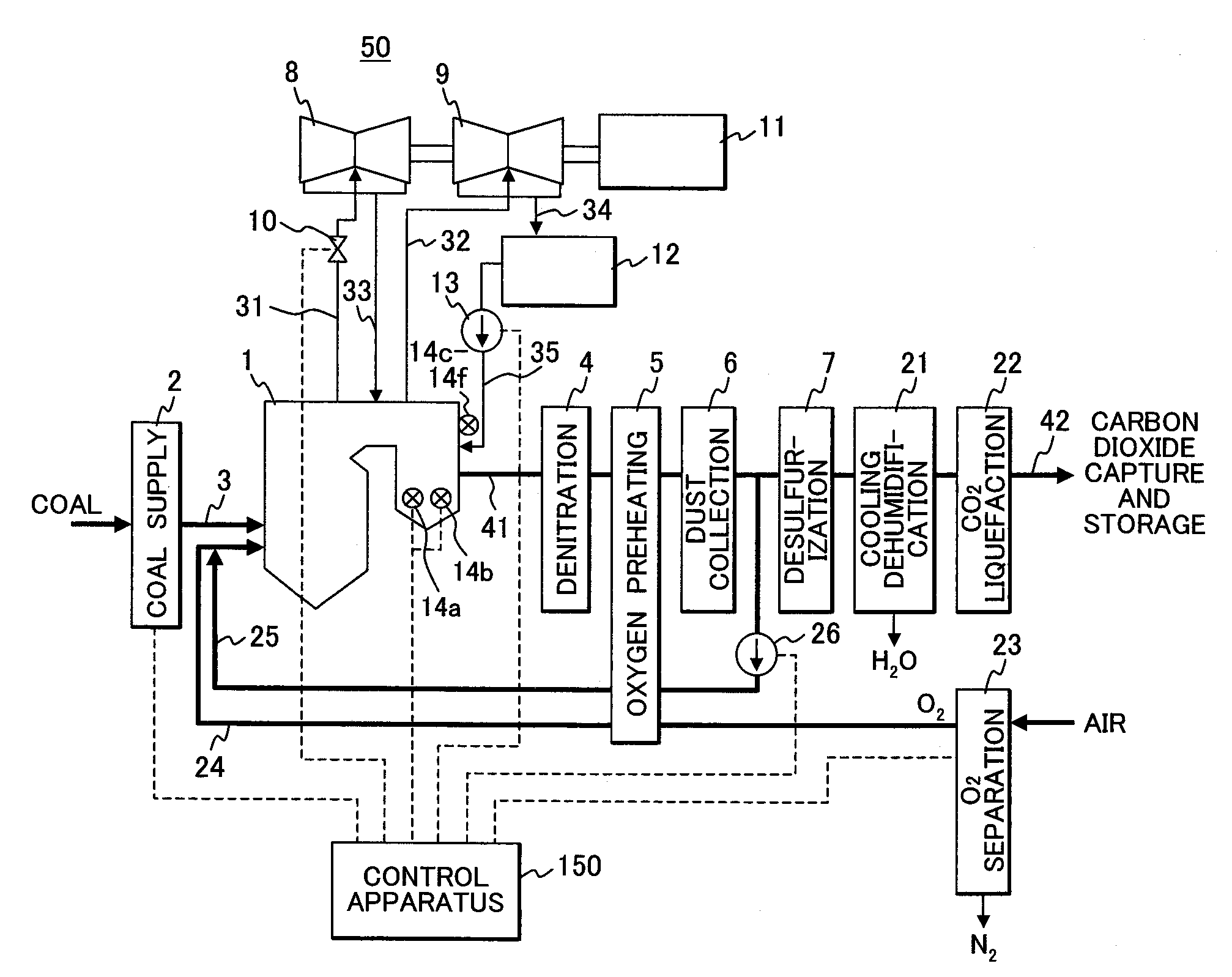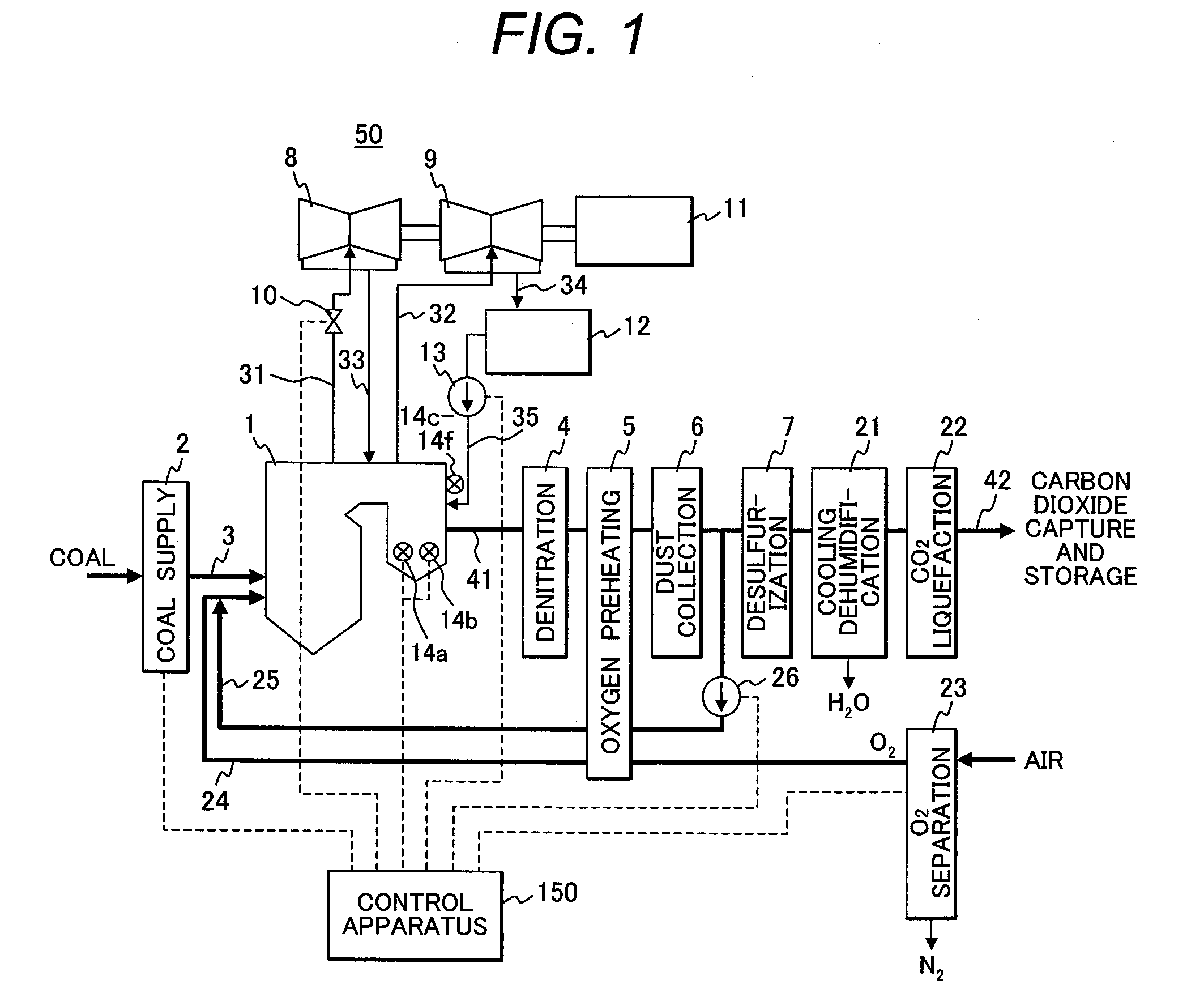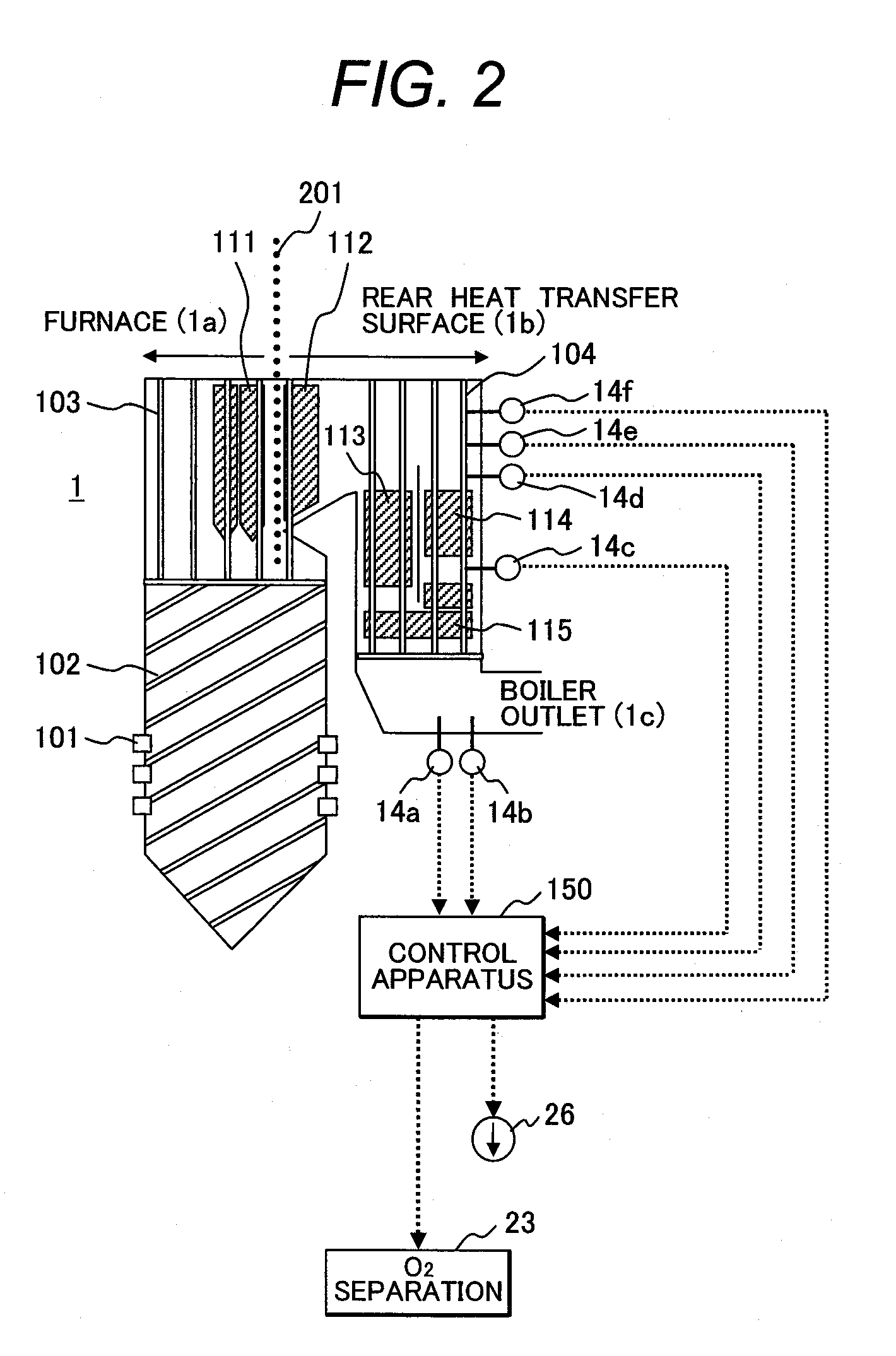Oxyfuel Boiler and a Method of Controlling the Same
- Summary
- Abstract
- Description
- Claims
- Application Information
AI Technical Summary
Benefits of technology
Problems solved by technology
Method used
Image
Examples
embodiment 1
[0037]FIG. 1 is a schematic diagram showing the configuration of a coal thermal power plant suitable for the carbon dioxide capture and storage equipped with an oxyfuel boiler which is an embodiment of the present invention.
[0038]In FIG. 1, the coal thermal power plant is equipped with an oxyfuel boiler 1 having a furnace which uses powdered coal as a fuel and burns the powdered coal with oxygen separately supplied by a coal boiler. The structure of the oxyfuel boiler 1 is the same as that of an ordinary air fired boiler having a furnace which uses powdered coal as a fuel and burns the powdered coal with supplied air.
[0039]Fuel coal is pulverized to powdered coal by a coal supply apparatus 2, and the powdered coal is supplied from the coal supply apparatus 2 through a coal supply line 3 to the furnace of the oxyfuel boiler 1 and burned together with the separately supplied oxygen.
[0040]Combustion flue gas generated by burning powdered fuel coal with oxygen in the oxyfuel boiler 1 is...
PUM
 Login to View More
Login to View More Abstract
Description
Claims
Application Information
 Login to View More
Login to View More - R&D
- Intellectual Property
- Life Sciences
- Materials
- Tech Scout
- Unparalleled Data Quality
- Higher Quality Content
- 60% Fewer Hallucinations
Browse by: Latest US Patents, China's latest patents, Technical Efficacy Thesaurus, Application Domain, Technology Topic, Popular Technical Reports.
© 2025 PatSnap. All rights reserved.Legal|Privacy policy|Modern Slavery Act Transparency Statement|Sitemap|About US| Contact US: help@patsnap.com



